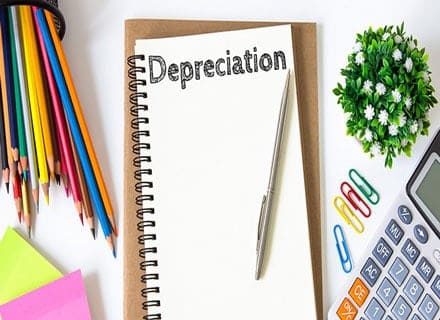What is a tax depreciation schedule and how can it change your tax return?

Albert Einstein said if you can’t explain something simply, then you don’t understand it well enough. So, it’s time to test my understanding of tax depreciation schedules!
A tax depreciation schedule is simply a report detailing the depreciation entitlements available to you within your investment property. The depreciation entitlements can be broken into two simple categories;
- Capital Allowances (Division 43)
Capital allowances are based on the historical construction cost of the property, excluding the value of plant and equipment assets, which we’ll come to in a moment. Capital allowances can be claimed on your original residential property, where it was constructed after the 15th of September 1987, or on any subsequent qualifying renovations or improvements completed by either the previous owner or yourself.
So, to put it another way, say your property was built in 1996. We will estimate the cost to build the property at that time, and you’ll be able to claim 2.5% of the value each financial year. So, if the total build cost was $200,000 and the plant items were $30,000, the remaining $170,000 would attract a 2.5% deduction of $4,250 each financial year for 40 years from the date of construction.
- Plant & Equipment Items (Division 40)
Plant & equipment items are generally ‘loose assets’ or control panels for automated systems as defined by the Australian Taxation Office (ATO). The ATO publishes a list of these assets every year around July. In a residential property, the most common plant assets are;
- Bathroom Accessories
- Exhaust Fans
- Hot Water Systems
- Carpets
- Vinyl
- Blinds
- Curtains
- Air conditioners
- Door Closers
- Security Systems
- And many more!
These assets are estimated as part of a depreciation schedule, and you’ll generally be able to claim between 100% and 20% of the estimated residual value each year. Each plant and equipment item has a different depreciation rate, but we’re sticking with an overview here.
Therefore, a tax depreciation schedule includes these two components of depreciation and their estimated value. The schedule itself will show 40 years’ worth of depreciation in two different accepted methods. One tends to be more aggressive in the first few years (see diminishing value) and the other maintains a more constant level of depreciation (see prime cost).
Tax depreciation deductions have been boosting investors’ cash flow for years, however changes introduced in the 2017-18 Federal Budget will limit depreciation claims on investment properties purchased after 9 May 2017.
According to the new guidelines, a property investor will no longer be able to claim depreciation on plant and equipment assets installed by a previous owner. Only components that you have purchased yourself will be claimable.
Properties purchased before 9 May 2017 will be unaffected by the changes.
- What deductions can you claim against a property purchased after 9 May 2017?
Capital works
Depreciation of the actual building is still claimable. Your Quantity Surveyor will still be able to prepare a tax depreciation schedule to ensure you claim all tax deductions you’re entitled to.
Renovation costs and plant & equipment assets you’ve purchased yourself
Similarly, your Quantity Surveyor can list any renovation costs and include them in your depreciation schedule. New assets you purchase yourself – dishwashers, blinds etc – should also be included in the depreciation schedule and claimed at tax time.
Everything – if it’s a newly built property
Brand new property? No problem. The Federal Budget changes only affect second-hand properties so you’ll be able to claim both capital works and plant & equipment deductions as usual.
Now that we know what a depreciation schedule is, how can it change your tax return?
We’re not qualified to provide accountants advice, so you should always speak with them to find out the EXACT impact on your personal situation. Essentially though, the total depreciation comes off your taxable income. Let’s run through a quick scenario.
Let’s say your salary is $88,000 per year, and you have no other deductions. According to the ATO’s simple tax calculator, you’ll be paying $20,507 in tax (2015/2016 year).
We were the first quantity surveyors to publish average deductions in the first full year of claim, this was back in 2015. We’ll be updating our stats soon, but this figure was $9,183 worth of deductions, so let’s assume this figure is available. The $9,183 deduction comes off the taxable income of $88,000 so that brings it down to $78,817. Using the same tax calculator, the tax payable is no $17,162.52.
Breaking that down, a depreciation schedule on this hypothetical, yet average property produced a saving of $3,344.48 within the first full year. An average depreciation schedule is around the $600-$700 mark, so the report is paying for itself five times over within one year.
There are certainly properties that won’t achieve that level of deductions, and some that won’t have anything at all. By the same token, many properties will show over $20,000 worth of deductions within the first year.
The most important thing is to contact a quantity surveyor for an indication of the deductions you might have available to you, as the tax savings can make a huge difference to your investment cashflow and or convert the pain of a trip to the accountant into pure joy!
Mike Mortlock is a Quantity Surveyor and Managing Director of MCG Quantity Surveyors. MCG Specialise in Tax Depreciation Schedules and Construction Cost Estimating for investors. You can visit them at www.mcgqs.com.au
